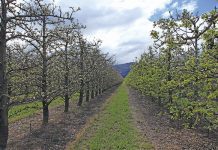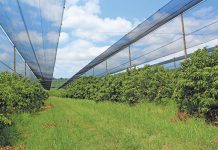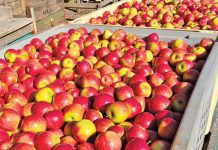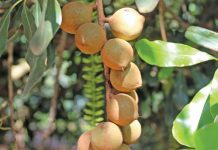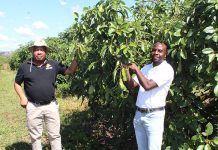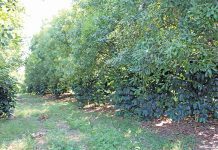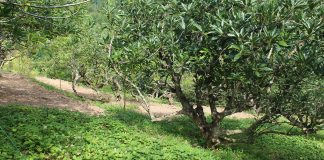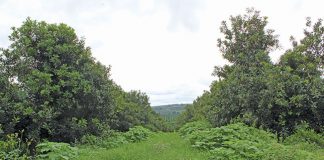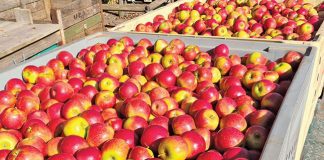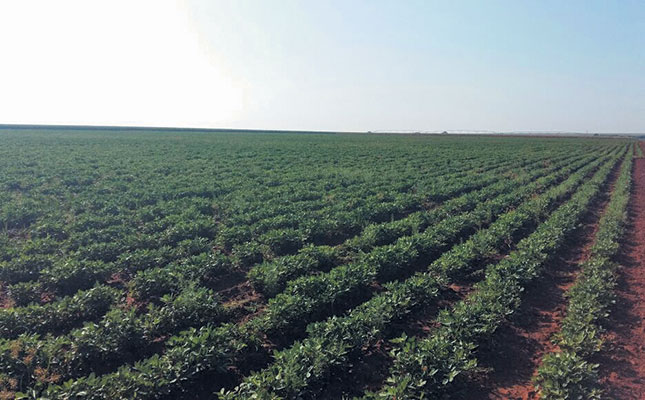
South African producers can earn a healthy premium from locally produced groundnuts as they are sought-after on the export market due to their shape and taste.
On average, about 25% of South Africa’s crop is exported.
This is according to Gerhard Dreyer, owner of The New Nut Company near Setlagole in North West.
The operation processes peanuts from approximately 50 suppliers and also grows about 450ha of the crop on dryland. Gerhard started out as a supplier to the company, but acquired shares in 2005 before taking full ownership of the business in 2007.
Locally, The New Nut Company supplies peanuts to Tiger Brands and Simba, and under Gerhard’s leadership it started exporting to Rotterdam. Today 25% to 30% of the company’s peanut production is exported.
In addition to sourcing from local suppliers, the company also imports peanuts, mainly from Argentina.
“Only 15% to 20% of locally grown groundnuts are produced under irrigation. Most of those farmers who do irrigate produce both groundnuts and groundnut seed,” says Gerhard.
The reason for this, he explains, is the high cost of irrigation, and only farmers who earn a premium from selling seed can justify investing in irrigation.
Planting & production techniques
According to Gerhard, peanuts are better suited to sandy soils, with a maximum of 15% clay content. The soils on the farms of The New Nut Company consist predominantly of sandy soil, which is ideal for peanut production.
The nature of the soil, however, means that proper seed bed preparation is essential. The seedbed should be deep, without compaction layers, to accommodate the groundnut plant’s deep taproot system with its elaborate lateral root system.
Plant spacing is also critical and a row width of 11cm is advisable, Gerhard stresses. One of the secrets of successful peanut production is to plant the seed no deeper than 5cm, he explains.
The locally grown Spanish-type peanut (Arachis hypogaea fastigiata) is a naturally small-kernelled variety with a red skin and a bold taste. It has a 150- day growing cycle which makes it ideal for the local summer season, and ensures that harvesting can be completed before frost arrives if planted timeously.
Rotation
The crop is grown in rotation with maize to improve disease, weed and pest management in both crops. As with most legumes, the groundnut plant’s root system contains nodules of nitrogen-fixing bacteria.
After the plant dies off, the fixed nitrogen is released, making it available to the next crop (in this instance, the maize crop, which is planted after the peanuts).
When recommended rates of phosphate fertiliser are applied during the maize rotation, additional phosphate is not required for the following peanut crop.
According to Gerhard, input costs for the crop are fairly low, with manual labour representing the largest component.
However, in high-rainfall years, aphids may need to be controlled as they can feed on the plant’s roots, inhibiting moisture and nutrient uptake, and in turn affecting yield.
Gerhard and his team spray plants with a foliar supplement to control leaf spot 40 days after planting.
Timing the harvest
According to Gerhard, a groundnut plant usually produces about 80 pods, and 80% of these produce two seeds per pod.
The plants flower and produce pods continuously and farmers should therefore monitor their lands closely to determine when harvesting should start.
This is usually about 150 days after planting, when between 70% and 80% of the pods on the plants are ripe.
Manual vs mechanical
Harvesting can be done manually or mechanically, but the latter is costly; a harvester with the capacity to harvest 30ha/ day must be imported and can cost up to R4 million. To justify this sum, Gerhard estimates that a farmer would have to plant at least 400ha to peanuts.
For many farmers, employing manual labourers is still the more economically viable option. During harvesting, the plant is pulled up from the ground and left in windrows to dry for three days.
The moisture content in the seed has to be reduced to about 7% before the crop can be processed at a factory.
With an average harvest of 1t/ ha, a farmer can expect a return of about R11 500/ha, thus achieving a fair margin.
In South Africa, the Hoopstad area is particularly well suited to groundnut production and farmers there achieve yields of up to 2t/ha, according to Gerhard.
Income from peanuts can be further increased by bailing and selling plant rests as animal feed; this can earn about R2 000/t.
Seed production
The New Nut Company supplies contracted growers with seed to alleviate the initial burden of raising production capital. The cost of the seed is later deducted from a producer’s earnings when the crop is delivered to the factory.
“The demand for the coming season has increased, which is a challenge for us because we don’t have enough seed available to supply the total demand,” says Gerhard.
“There’s no Pannar or Monsanto that produces seed for our industry – we have to rely on our own propagation scheme. We buy original plant material from the Agricultural Research Council, which conducts trials to test new varieties, and use this to propagate our own seed in a multiplication programme.
Seed is expensive, costing about R2 500 per 25kg bag, but producing seed is a four-year long process.”
A number of farmers are contracted to plant groundnuts only for seed production purposes and they receive a premium price for their product.
Factory processing
The New Nut Company employs about 250 people during the harvesting season. When the peanuts arrive at the factory, they are de-shelled and classed. The best quality are exported and the remainder are sold to local processors and the informal market.
Gerhard emphasises that meeting demand is not easy, especially as peanuts cannot be planted late. With rain arriving later each year, some producers have opted for maize instead.
“Producers are contracted, but if it doesn’t rain, we can’t blame the farmers for not planting peanuts. We expect producers to be loyal to us, and, in return, we have to be understanding of the challenges they face,” he says.
“In this area, farmers can achieve maize yields of up to 3,5t/ha, so when prices are high it makes more sense for a producer to plant maize.”
To ensure consistent supply to its customers, The New Nut Company also imports peanuts, mainly from Argentina.
According to Gerhard, the company has to manage its stocks with care as shelled peanuts cannot be stored raw for more than about eight months.
While in the pods, peanuts can be stored for up to a year, but in storage they become susceptible to insect damage.
To minimise risk, the crop should therefore be moved as quickly as possible.
Production forecast
The drought has had a marked effect on the groundnut industry. Total crop forecast for the 2016/2017 season is 35 000t, but Gerhard thinks total production will not reach 18 000t.
“The average rainfall for our area is 500mm/year, but we’ve had only 87mm so far this year.
[Although] we had some late rain in winter, it will only help for the following season. It will take at least two years to get back to full production.”
With demand on the increase, and since the local industry is unable to meet demand, the
country will remain reliant on imports, Gerhard says. But due to good, steady prices and growing demand, groundnuts will remain a worthwhile option as a rotational crop in certain maize production regions.
But due to good, steady prices and growing demand, groundnuts will remain a worthwhile option as a rotational crop in certain maize production regions.
Email Gerhard Dreyer at [email protected].

